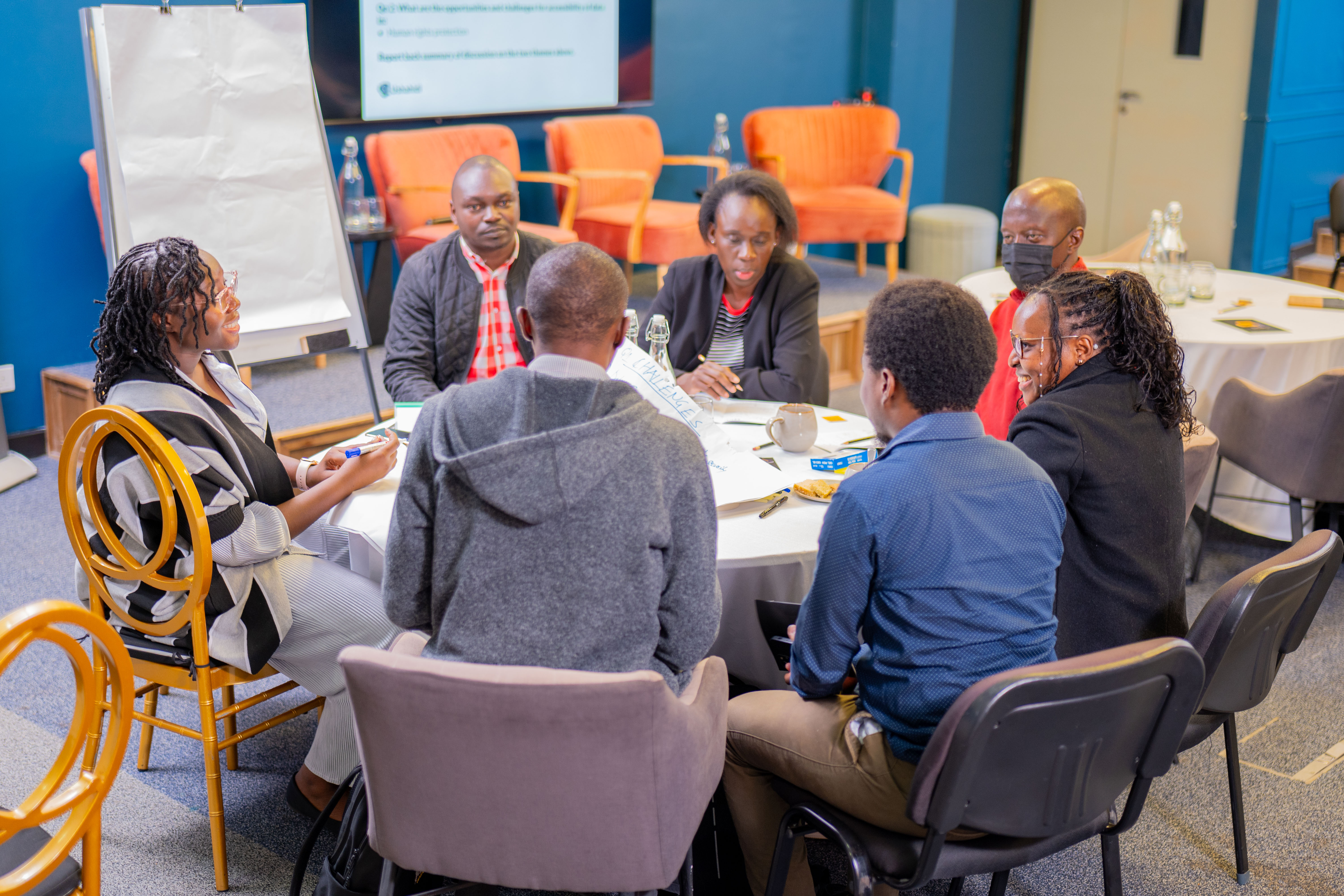
Case Study Report: Accessibility of Data in Human Rights Protection

This report analyzes the opportunities and challenges associated with data accessibility in human rights initiatives, based on insights from a brainstorming session. The report also outlines possible next steps to address these challenges and optimize the role of accessible data in protecting human rights.
Introduction
In the field of human rights protection, data accessibility plays a critical role in empowering communities, shaping policy, and monitoring human rights conditions. This report analyzes the opportunities and challenges associated with data accessibility in human rights initiatives, based on insights from a brainstorming session. The report also outlines possible next steps to address these challenges and optimize the role of accessible data in protecting human rights.
Context
Data is a powerful tool in the fight for human rights. Making data accessible ensures that decision-makers, communities, and advocates have the information they need to respond to human rights violations, craft evidence-based policies, and monitor the effectiveness of their efforts. However, issues such as data privacy, interoperability, and socio-economic factors complicate accessibility.
Opportunities for Accessibility of Data in Human Rights Protection
-
Ownership and Empowerment through Participatory Activities
Accessible data fosters ownership among affected communities, enabling them to actively participate in human rights initiatives and strengthening their voices in advocacy efforts. By facilitating informed decision-making, accessible data empowers communities to engage in evidence-based advocacy and hold governments or perpetrators accountable.
-
Diversity in Data Representation and Generation of Diverse Perspectives
Ensuring data accessibility allows for the representation of diverse voices, including marginalized groups, in human rights discussions. This inclusivity not only enriches the analysis with varied perspectives but also drives more comprehensive and equitable solutions to human rights challenges.
-
Third-Party Tools and Multimedia Applications
Open access to data enables third-party developers and organizations to create innovative tools that enhance data analysis and visualization. Multimedia formats (videos, images, audio) can also be leveraged to present human rights data in ways that are more accessible and impactful.
-
Evidence-Based Policy Making
Data accessibility helps in formulating evidence-based policies, ensuring that human rights protections are responsive to real needs. By grounding policy in factual data, more effective and targeted interventions can be developed.
-
Monitoring Human Rights Conditions
Access to data is vital for organizations monitoring human rights abuses. Real-time data can alert human rights defenders to emerging crises and enable a more timely and effective response.
Challenges in Accessibility of Data in Human Rights Protection
-
Interoperability
Different organizations, systems, and regions may use incompatible data formats, making it difficult to share and integrate data across platforms. This limits the ability to form a cohesive and comprehensive picture of human rights conditions.
-
Data Privacy and Anonymization
Ensuring that data is accessible while protecting the privacy of individuals and communities is a major challenge. Sensitive human rights data must be anonymized to protect those involved from further harm or persecution.
-
Socio-Economic Factors
Accessibility to data is often affected by socio-economic factors such as education, financial status, and geography. Communities with fewer resources may face barriers to accessing digital platforms or data analysis tools, thereby limiting their participation in human rights protection.
-
Bias and Misuse of Data
Data can be misused by political or other powerful entities for manipulation, political gain, or to undermine human rights efforts. Ensuring data is not weaponized is a key concern in making it accessible.
-
Infrastructure Gaps
In many regions, especially those impacted by human rights violations, the infrastructure needed to access, manage, and utilize data is lacking. This creates a significant barrier to accessibility, especially in remote or conflict-affected areas.
-
Political and Legal Barriers
Legal frameworks and political contexts often restrict access to human rights data. Governments may impose regulations that limit data sharing or manipulate legal structures to prevent access to critical information.
-
Digital Inequalities
Unequal access to digital platforms and tools further exacerbates data accessibility challenges. People in rural or underdeveloped areas are often left behind in terms of access to data and the internet.
-
Duty of Care vs. Political Power Play
Human rights organizations face the challenge of balancing their duty of care to individuals and communities with the risks of exposing them to political manipulation. This ethical dilemma complicates the decision to make data widely accessible.
Possible Next Steps for Ushahidi Data Archive
To address these challenges and fully leverage the opportunities of accessible data in human rights protection, the following steps were recommended:
- Implement stronger anonymization and data protection protocols to ensure that human rights data can be shared without compromising the safety or privacy of individuals. This includes encryption, secure data-sharing platforms, and privacy-by-design approaches.
- Develop common standards for data formats and sharing protocols to improve interoperability between different organizations and systems working in the human rights field. This will enable better collaboration and a more holistic view of human rights conditions.
- Establish clear guidelines for the ethical use of human rights data, ensuring it is not manipulated for political gain or other harmful purposes. Independent oversight mechanisms could be established to monitor the use of human rights data.
- Explore multimedia formats such as video, audio, and interactive maps to make human rights data more accessible and understandable to broader audiences. This approach can make data more engaging and easier to disseminate.
- Encourage human rights organizations to use accessible data to drive evidence-based advocacy efforts. By using data to support claims and recommendations, advocates can push for stronger human rights protections and policy changes.
This case study was developed through the collaborative efforts of the following individuals and organizations:
- Maurice Otieno (Baraza Media Lab)
- Irene Mwendwa (Pollicy)
- Viola Konji (National Coalition on Freedom of Expression and Content Moderation in Kenya)
- Immaculate Onyango (National Steering Committee on Peacebuilding and Conflict Management)
- Kelvin Nyangweso (Mtaani Radio)
- Miriam Beatrice (Paradigm Initiative)
- Vanessa Gathecha (Equiano Institute)
- Muchiri Nyaggah (Local Development Research Institute)
- Dr Paul Korir (Data.org)
We would also like to express our deepest gratitude to the Filecoin Foundation for the Decentralized Web (FFDW) for their support that made this possible.